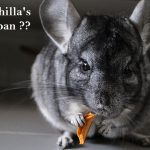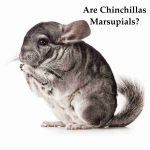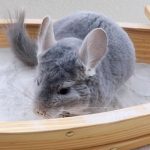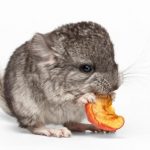Chinchilla
How to Care for Baby Chinchillas? Experts Tips
Chinchillas are definitely the cute pets that you can ever think of, But baby chinchillas should be the cutest among them all. Watching them grow before your eyes can indeed be a great experience in every respect. But, being babies, they are incredibly soft, and you need to take optimum care of the baby chinchillas and protect them.
Contents
- 1 How to Care for Baby Chinchillas?
- 2 How to Take Care of Orphaned Baby Chinchillas?
- 3 How to Hand Feed Baby Chinchillas?
- 4 Do Chinchilla eat their Babies?
- 5 What do you Feed Baby Chinchillas?
- 6 How Long do Baby Chinchillas Stay with their Mother?
- 7 Can you Touch a Baby Chinchilla?
- 8 Can Baby Chinchillas take Dust Baths?
- 9 How Much Should a Baby Chinchilla Weigh?
- 10 What to do if Baby Chinchilla is not Gaining Weight?
- 11 What Are Baby Chinchillas Called?
- 12 How to Take Care of Baby Chinchilla in a Step by Step guide?
- 13 How Many Babies Do Chinchillas Have?
- 14 Will All Chinchilla Kits Survive?
- 15 How to Separate Baby Chinchillas from Mother?
- 16 The Closing Thoughts
How to Care for Baby Chinchillas?
The first thing you need to do is separate males from females and keep the kits with their mother. Keep them on a solid floor in the cage with wire gaps. Handfeed the kits if they are underfed and keep a record of their weight. Finally, separate them once they are 12 weeks old.
That being the concise insight into how to care for baby chinchillas, we will now delve deeper into the topic.

How to Take Care of Orphaned Baby Chinchillas?
Orphaned chinchillas can be what you would find to be a risky affair. Taking care of them needs to be handled with extreme care.
The tips here should be a great option to help you understand how to take care of the orphaned baby chinchillas.
Provide them in a cage with a solid bottom and smaller wire gaps
The baby chinchillas have tiny legs and can get into the gaps into the bottom of the cage. A small cage will prevent them from jumping or running and thereby getting hurt. The right size you pick should be dependent on the number of kits.
If you have 3 to 4 kits, you will need to go with the cage with a size of 16 x 180 inches. The spaces between the bars should be 0.5 inches apart. Make sure that the cage is placed in a warm and draft-free room. You need to transfer the kits to a larger cage when they are around 8 weeks old.
Feed them with Kitten milk
Orphaned kits do not have access to nutritional food. They would need nutrients, and the best option to provide it to your baby chinchilla would be through kitten milk. You can use an eyedropper or syringe to feed the milk to the kits.
- You can buy kitten milk from pet stores or even online.
- You need to hold the babies upright when feeding them.
- Do feed your kits once every two hours for the first two weeks. After that, the interval can be changed once every 3 to 4 hours for 6 weeks.
Stimulate them to defecate
Soon after feeding, stimulate their bottom to make them defecate. Mother chinchilla knows how to do it, thereby preventing indigestion and other issues. Use a cotton ball that has been dampened with warm water.
- Use the cloth to wipe the anal area in softer strokes to induce defecation.
- You do not need to do it after 2 weeks when the kits learn defecating on their own.
Monitor the weight of the kits
It would be ideal to weigh the kits once every two to three weeks. The weight gained in the first week should be a clear indication of your chinchilla’s growth. Monitor the weight for the first two to three weeks.
- In case you find them losing their weight, increase their feeding.
- Ideally, the weight should double up after around three week’s time.
Feed the additional food than milk
Providing hay and pellets right at the age of 2 to 3 weeks would be a better option. Just provide them these foods in small quantities, and they will begin eating them slowly. This will help to simplify the weaning process.
- Just add only a small handful of solid food.
- Change the food every two days to help keep it afresh.
- Stop feeding the milk completely once the kits are 8 weeks older
How to Hand Feed Baby Chinchillas?
Handfeeding a chinchilla should be done by holding it upright. Chinchilla kits need to be handfed once every two or three hours. You can use a syringe or eyedropper. Holding them upright can be helpful in avoiding choking. It will also help you prevent the baby chinchilla from facing any digestion related issues.
Most of the female chinchillas can take care of the baby chinchillas on their own. But, in some cases, it may be necessary to hand feed the baby chinchillas if it is not getting enough nutrition. It may be needed in cases where the female chinchillas do not produce enough milk. The other conditions where hand-feeding may be required can include the death of the female chinchilla, or the mother decided to reject the kits for some reason.
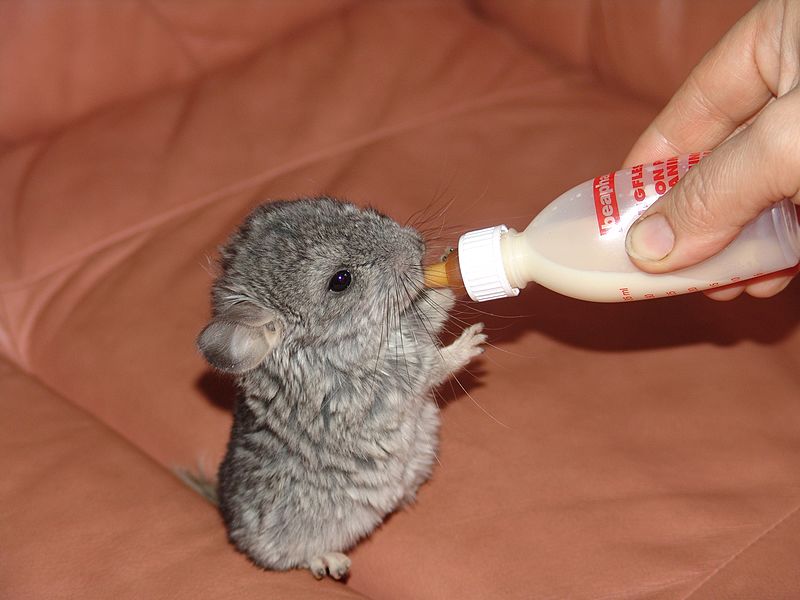
When hand-feeding the chinchilla, never ever squirt the milk straight into the baby chinchilla’s mouth. The right option would be to place a small drop on its lower lip. Place another droplet, when the baby chinchilla laps it up. That way, the baby chinchilla will learn to drink or eat from the hand-fed option. Make sure you feed the kit for the first two weeks for every two hours. It is advisable to opt for hand feeding along with the mother’s care. You can make it once every three to four hours until weaning.
While hand-feeding your baby chinchilla, make sure that the kit is comfortable with the task. Initially, it may not be comfortable to stay with you for prolonged periods of time. You may need to develop the comfortability levels gradually.
Yet another great idea would be to foster the kits. This involves nursing the kits with the help of another female. There may be people who are doing fostering work or service. Getting in touch with them can be an excellent idea.
Do Chinchilla eat their Babies?
Chinchillas eat their babies, but only in some rare cases. A mother chinchilla may eat the babies if it is starving and needs to survive, the baby chinchilla is severely ill, and the kit has already died. Leaving those instances, the mother chinchilla will never eat a baby.
The mother may eat a kit until it has grown to be three weeks old. If you continue to see the behaviour, it would be ideal to separate the mother from the kits and hand-feed your baby chinchillas.
What do you Feed Baby Chinchillas?
Chinchillas do eat a wide range of food. The timothy hay and pellets would be the best food for baby chinchillas. For the first 8 to 12 weeks, the mother’s milk should be the prime food.
However, when it comes to the food to be fed to the baby chinchillas, it may be worthwhile to find the right type of food and the right quantities that can prove to be helpful in taking the optimum care of the baby chinchilla.
Some good food items you can feed your baby chinchilla can include:

Higgins Sunburst Gourmet Chinchilla Food Mix
Check on AmazonOne of the best chinchilla food for the purpose of feeding the baby chinchillas, the Higgins Sunburst Gourmet Chinchilla Food Mix offers a decent amount of nutrients. It has all the daily pellets and even has hay mixed.
It comes with plenty of daily nutrients and other fruits and veggies. The DHA Omega 3 contained in the product would make it one of the excellent options. The food consists of Assorted Fruits & Veggies, Natural with added vitamins & minerals. It is loaded with small animals.
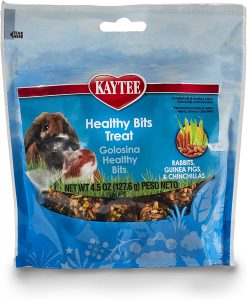
Kaytee Forti-Diet Pro Health Chinchilla Food
Check on AmazonComing from brand Kaytee, the Kaytee Forti-Diet Pro Health food is one of the excellent options. It is one of the fun to eat products for your chinchillas. The bits are made of nuts, fruit, seeds, and honey. It can be your best bet for providing handfed food to your baby chinchillas.
It can be your best bet for tasty and nutritious food for the chinchillas. It can be the right choice for both bonding and playtime. It can also be a good option for a perfect training food.

Supreme Petfoods Tiny Friends Farm Charlie Chinchilla Food
Check on AmazonIt is one of the excellent food for chinchillas of all breeds and can prove to be an excellent option for nutritional and balanced food. Designed to provide natural foraging, it does not consist of sugar. That would make it a completely natural in taste.
Chinchilla food comes with natural and delicious ingredients such as Timothy Hay, carrot, maize, oats, wheat, and peas. It works best for natural wellbeing and vitality.
How Long do Baby Chinchillas Stay with their Mother?
Baby chinchillas stay with their mother until they are 10 to 12 weeks old. You should not separate them earlier than 8 weeks. They can suffer from developmental and behavioural issues if they are separated before the age of 8 to 12 weeks.
The kits begin eating the other food than milk when they are at 3 to 4 weeks of age. They can even begin eating small amounts of hay when you provide them enough food. If you provide them other food such as vegetables, they will also begin eating them in small quantities.
The baby chinchilla will begin drinking less milk as they grow further. The baby will wean away from the mother when the kit is between 8 and 12 weeks of age. Since chinchillas are social animals, they need to have behavioural issues if they are separated early from their ilk.
Can you Touch a Baby Chinchilla?
You can touch a baby chinchilla right after its birth. They are grown up right from birth, and you should be handling them easily. Chinchilla mothers do not reject the kits if they are touched by humans. Handling and touching the baby chinchillas can help them learn socialising and trusting humans.
Experts encourage touching a chinchilla or a chinchilla baby. Touching them right from birth can help them become less aggressive. The mother and the kits may get nervous when you handle them for the first time, and thus it is necessary to handle them at their own pace.
Finally, each of the baby chinchillas has their own personalities. While one baby chinchilla may like you touching it, the other may not. Respect their individual personality and handle them accordingly.
Can Baby Chinchillas take Dust Baths?
A dust bath is something a chinchilla will find a really interesting option. But, a baby chinchilla should wait till it is 10 days old to get its first dust bath. If the baby chinchilla has nice bright eyes and the mother has got back to normalcy, 7 to 10 days would be fine for the baby chinchilla to get its dust bath.
If you find the baby chinchilla is not comfortable with dust bathing, it may be worthwhile to wait for a period of 14 days. Dusting too early in life can cause the baby chinchillas to have eye problems. In fact, it would be advisable to avoid giving the mother a dust bath when the kits are younger. Even when the baby chinchillas may not take a dust bath, they may begin facing health issues when it places its head into the mom’s fur.
Recommended Reading: How Much Dust Would You Need for a Chinchilla Dust Bath?
Dust baths should be avoided during the initial days of the birth of your kit. It would be advisable to wait until the baby chinchilla has gained weight and has become healthy enough. The ideal wait period to provide the dust bath should be 10 days from the date of birth.
How Much Should a Baby Chinchilla Weigh?
Baby chinchillas weigh 25 to 80 grams at birth. The normal weight should be around 35 to 60 grams. They will almost be normal and open their eyes within a few minutes of their birth. More weight of the kit at birth will indicate a better rate of survival into adulthood.
The adult chinchillas weigh anywhere between 400 to 600 grams. A healthy chinchilla should ideally weigh at 600 grams or closer. Take care that the adult chinchilla does not overgrow to more than 700 grams. That would be akin to being obese, and this can cause severe health issues.
The adult weight of the chinchillas would be on the following lines:
- Long-tailed chinchillas weigh between 370 to 490 grams
- Short-tailed chinchillas weight between 1100 grams to 1400 grams.
The female chinchillas tend to weight more than male chinchillas.
What to do if Baby Chinchilla is not Gaining Weight?
If you find your baby chinchilla is not gaining weight, you will need to increase the hand feeding to ensure that the kit is healthy. Feed it until it gains the recommended weight. It can happen when the litter size is too large. You will need to take care to feed the weaker kit properly so as to make it gain appropriate weight.
It is quite common to find that one of the kits is smaller, and the other is healthy. The smaller of the kits is known as a runt. There are several reasons a baby chinchilla would not gain weight.
If you find the baby chinchilla is not gaining weight, it would be essential to find out the actual reason. In case the baby chinchilla is ill, and that is why it isn’t gaining weight, you should immediately consult a vet.
In case it is an issue of the larger kit bullying, the smaller ones, you can separate them and let each of them feed one after the other. If that does not solve the problem or the mother has a considerably larger litter, it would be a good idea to supplement the mother’s milk with an adequate amount of hand feeding.
If you find the kit not gaining weight, it may be a good idea to opt for fostering that we suggested in one of the previous sections. You can do it with the help of another nursing female or opt for any specialized professional service that handles such services.
What Are Baby Chinchillas Called?
The baby chinchilla is called a kit. In fact, the group of kits is called a litter. The word kit is a short term for kittens though the word kitten is not used for the baby chinchillas. Other words used for the baby chinchillas include babies, juveniles, or young.
Newborn kits can be born with fur. You will find them getting born with their eyes open, just unlike the kittens and a few other animals. Under normal circumstances, each of the litters can have one to six kits. You may also find a mother giving birth to more than six kits.
How to Take Care of Baby Chinchilla in a Step by Step guide?
While we have taken you on a ride to understand how to take care of the baby chinchillas by following thorough precaution options by following different genres and options, we will present you with a tabular guide on how to take care of baby chinchillas.
A week before birth | Separate male from female | Male and female are likely to mate soon after the female chinchilla has given birth to its litter. This can make the chinchilla pregnant again, and the kits can suffer malnutrition. |
One after before birth | Provide a cage with a solid floor and smaller gaps between the wires | The baby chinchillas have tiny feet. Lack of a solid floor or a wider gap can make them stuck in the gaps. |
0 to 10 weeks | Monitor the kits | This phase will involve handling and touching them, weighing them, and making sure that they do get enough food. You can even consider providing hand feeding if any of the kits are malnutritioned |
10 to 12 weeks | Weaning | This is the period that kits stop drinking mother’s milk. You should provide them additional food. Offer hay and fresh vegetables |
12 weeks and after | Separation | This period involves the separation of the kits from the mother and pairing them up with the chinchillas of the same sex. |
How Many Babies Do Chinchillas Have?
Chinchillas mostly have 4 kits per litter. The 2 kits per litter are one of the most commonly found options. There would be around 1 to 3 litters per year. In some special cases, you may find them having up to 6 kits per litter.
In sharp contrast to the other rodents, chinchillas have smaller litters. The average size of the litter you would find is two kits per litter. This can be because chinchillas do not have as many natural threats as the other rodents have. This makes them less inclined to produce offspring when you compare them to the other rodents.
Will All Chinchilla Kits Survive?
Ideally, seven out of ten chinchillas survive to adulthood. Though you may find that not to be a significant rate of survival, it is the highest among the rodents. You should be ready to accept that eventually, not all kits will survive.
The weaker kits are likely to be rejected by the mother if it is too weaker. The survival rate in a chinchilla is around 70 to 80 percent. Apart from the weakness or illness right from birth, baby chinchillas may also face issues such as getting wounded by falls or other issues. You can avoid this occurrence by making sure that the cage is not larger so that they would not jump, run, or even hurt themselves.
The best way to find if the kit is fine or ill is to check its tail. The tail of the chinchilla would be long and flat when they are born. The tail will curl up over a day, as in the case of an adult chinchilla. If you find that the tail is not curled up, you will find that the tail does not curl up. You should find the tail curling up in 24 to 48 hours after birth. If you find that not happening, it may be a clear indication that the kit is unlikely to survive.
How to Separate Baby Chinchillas from Mother?
The process of separating the baby chinchillas from mother is easy and simple. You simply need to place them in a separate cage. Just ensure that the cage is equipped with everything that the chinchilla needs to have. If you have multiple kits, keep males and females separate until they have reached the proper age for mating.
In the wild, the kits separate from their mothers and decide to live in their own herds. They also stay in the same herd but spend less time with their mother. However, in captivity, you can control how to separate baby chinchillas from the mother.
Weaning in chinchillas will begin in around 8 weeks. The process will continue until the baby chinchilla is 10 or 12 weeks older. You can place them in a separate cage or cages depending on the size of the litter. You can place all the male kits together and all the female chinchillas in a separate cage.
Avoid putting the male and female kits in the same cage as it will cause inbreeding.
The Closing Thoughts
The young chinchillas are always a welcome addition to one’s family. If you are able to handle the guidelines and follow the tips we have shared above, it would be a good idea to ensure that you are able to take adequate care of your chinchillas.
Weighing them regularly and monitoring them effectively can prove to be one of the excellent options you would find rather impressive. Check out the best options outlined here and share your inputs with us.

-
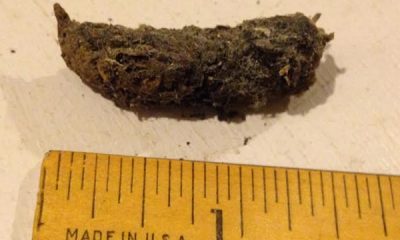
 Skunk4 years ago
Skunk4 years agoWhat Does Skunk Poop Look Like? Images & Identifications
-
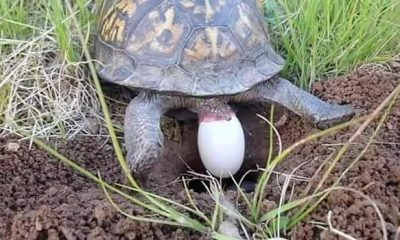
 Turtles4 years ago
Turtles4 years agoHow To Take Care of Turtle Egg At Home?
-
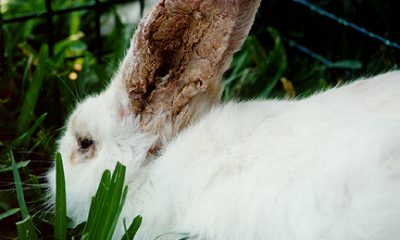
 Bunny4 years ago
Bunny4 years agoHow to Get Rid of Mites on Rabbits? #NaturalRemedies #Video
-
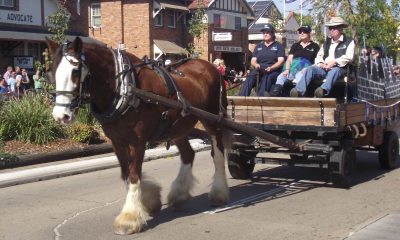
 Horse4 years ago
Horse4 years agoHow Much Weight Can a Horse Carry? #Clydesdale #Friesian #Mustang #Draft
-

 Turtles4 years ago
Turtles4 years agoHow to Take Care of Snapping Turtle Eggs? #Incubating #Hatching
-
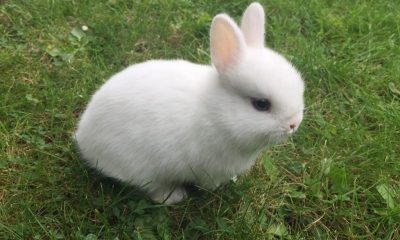
 Bunny4 years ago
Bunny4 years agoHow Big Do Dwarf Bunnies Get? – Amazing Facts #Images
-
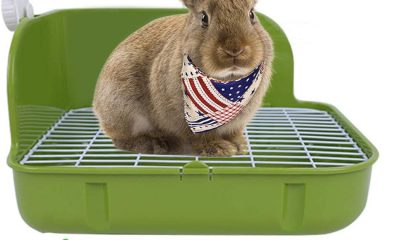
 Bunny4 years ago
Bunny4 years agoHow to Potty Train a Rabbit in House? Tips on Litter Training
-

 Turtles4 years ago
Turtles4 years ago8 Basking Rocks/ Platforms for Turtles – A Perfect Guide


